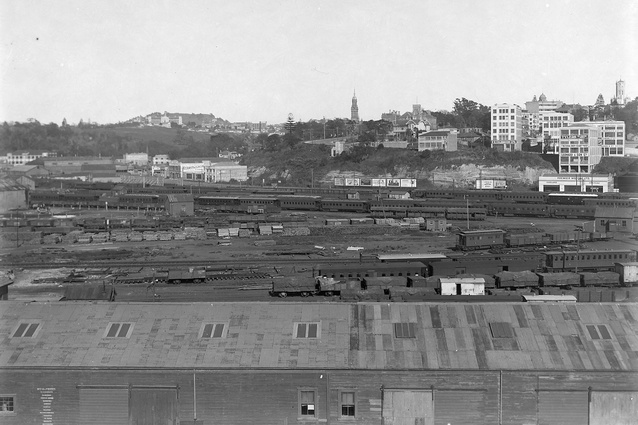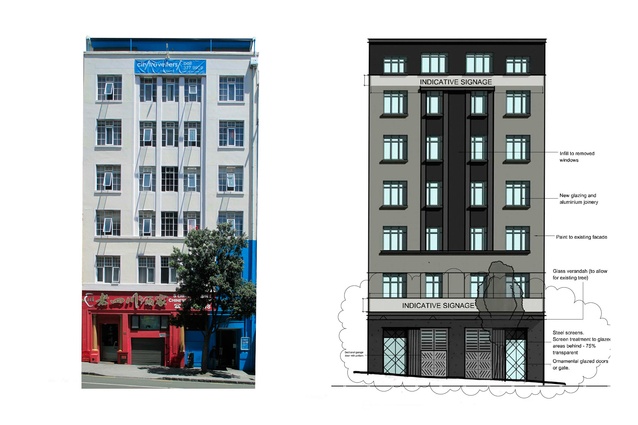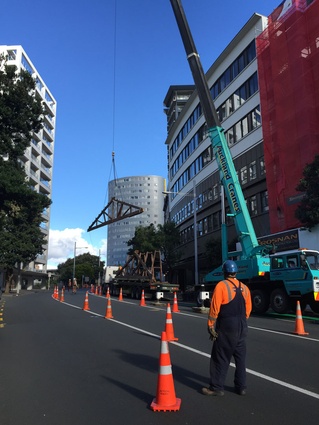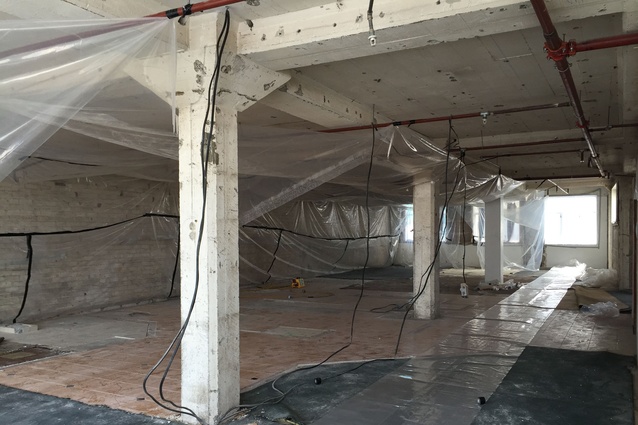Out of the past
In the heady days of the mid-80s, Auckland gained the moniker of ‘City of Cranes’ as the drive to modernise reached fever pitch. In the process a number of historic buildings were demolished to make way for the new, world-class centre our city fathers envisioned.
While cranes may not be dominating the city’s skyline to that extent now, construction has once again come to downtown Auckland. It would also appear that cooler heads are prevailing and rather than tearing down each and every older building, developers are now just as likely to renovate, repurpose and adapt these buildings to suit.
Such is the case with Blackstone Group’s Anzac Avenue Apartments project. Built in 1926 for hardware merchant PR Colebrook, the five-storey concrete and brick building was converted into serviced apartments in the ‘90s before receiving an upgrade when Blackstone purchased it ten years ago.
“There were a number of factors in the building’s favour, firstly it offered a great inner city location and also, as had already been proven, it was ripe for redevelopment,” says Blackstone director John Abel-Pattinson.
This is not the company’s first foray into residential development, having traditionally positioned itself in the property, multi-residential and hotel management sectors. With the concept design and resource consent in place, Blackstone Group engaged the services of project and development management consultancy Greenstone Group – a company with extensive experience delivering multi-residential projects and working on sensitive heritage properties.
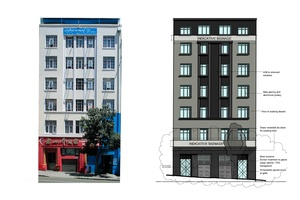
“There are a number of complexities to consider when undertaking a development of this nature,” says Greenstone Group senior project manager Lance Painter. “The original building structure needs to be investigated and assessed, as well as the existing infrastructure. Then there is the assessment of the heritage features to understand what can be preserved, what has significance, what will add value to the final product or what needs to be reinstated.”
Initial investigations were complicated as the building was operational with 28 serviced apartments. Discrete investigations had to be made in order to discover what heritage elements remained prior to the building being vacated and handed to the building contractor and a complete stripping back to the original brick and formwork structure could be completed.
“In the case of this particular building, Greenstone Group proposed exposing and retaining some of the original heritage features, including brickwork, columns and insitu concrete ceilings; a concept which the architects have developed into a New York loft-style aesthetic. This meant carrying out a composition analysis of the original concrete to assess, amongst other things, the concrete strength and salt content.”
While the original 1920’s roof trusses could not be reused on this project, they were removed in one piece so they can be retained in original condition to be utilised instead of broken up into parts and a portion of the original timber roof sarking has been reused for building features.
As well as bringing the building up to code thermally and acoustically, it also had to undergo structural strengthening to bring it into line with new seismic regulations. This included the incorporation of a seismic break into the previously upgraded concrete staircase, new foundations and shear walls for each floor of the building structure.
“As per our dedication to best practice standards, the building now sits at 100 per cent of the seismic code,” says Abel-Pattinson.
When Progressive Building visited, contractor Brosnan Construction had completed the main structural upgrade works and the internal fit-out was set to begin.
“We worked within the original envelope of the building, turning the five storeys plus mezzanine into six storeys with 30 apartments in total,” says Abel-Pattinson.
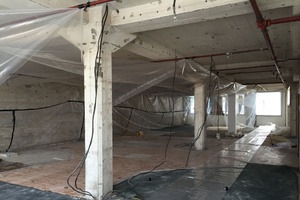
The building now offers a range of studio, 1- and 2-bedroom apartments ranging in size from 35m2 to 76m2. Given the building’s proximity to the city centre, access to public transport links and in working with the council, a key decision was made to not provide car parking facilities within the building. Rather, each apartment has scooter parking and a storage unit located in the basement.
“We very much see the building appealing to young professionals, those people who already work and play in the city and for whom, a car is not a necessity,” says Abel-Pattinson. “With that in mind, the decision to not include onsite car parking wasn’t a hard one.”
The final element to the building is the façade, which is being fully renovated to bring it into line aesthetically with its Art Deco leanings, including visually complementary, acoustically rated replacement windows, while still respecting the building’s original warehouse heritage.

